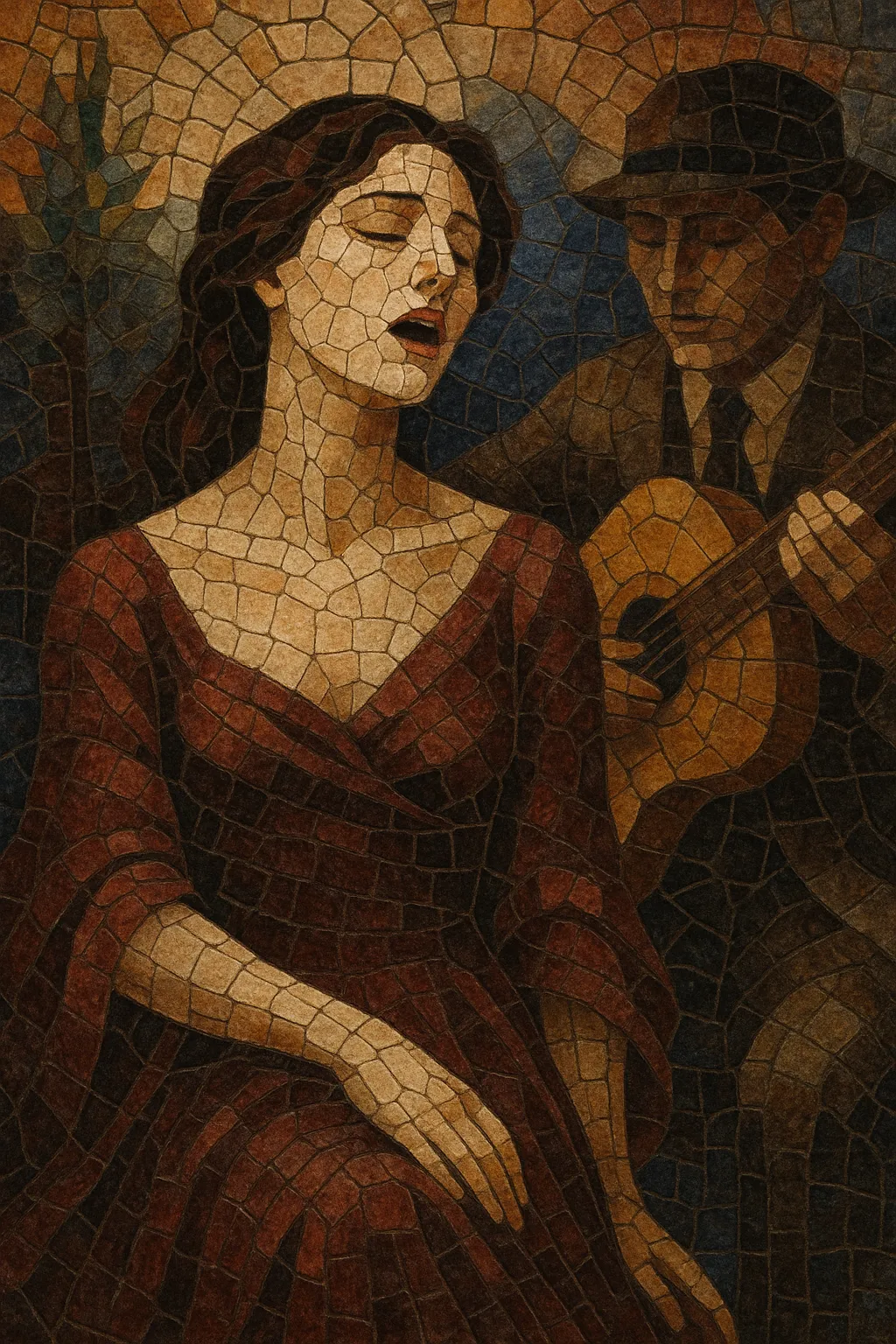Russian romance (russkiy romans) is a Russian art‐song tradition characterized by intimate, lyrical melodies, sentimental texts, and solo vocal performance accompanied by piano or the seven‑string guitar. It favors strophic forms, flexible rubato, and expressive ornamentation that foregrounds the singer’s narrative and emotional delivery.
Emerging from aristocratic salons and urban drawing rooms, it blends Western European art song with local idioms and a strong Romani ("gypsy") influence. Typical themes include love, longing, memory, nocturnal imagery, and bittersweet nostalgia, often set in minor keys with a tender, melancholic tone.
Across the 19th and early 20th centuries, Russian romance moved from salons to cafés, cabarets, and the stage, shaping the melodic and poetic sensibility of later Russian popular song and “estrada.”
Russian romance took shape in the late 18th and early 19th centuries in the salons of Moscow and Saint Petersburg. It adapted the Western European art song (romance, lied) into Russian language and sensibility, combining classical vocal writing with Russian poetic traditions. Composers such as Alexander Alyabyev, Alexander Varlamov, Alexander Gurilyov, and Alexey Verstovsky established the genre’s lyrical, strophic song model accompanied by piano or seven‑string guitar.
As the genre matured, composers like Mikhail Glinka and Pyotr Bulakhov broadened its melodic palette and harmonic color while keeping its intimate format. A strong Romani ("gypsy") strand—heard in rubato delivery, harmonic minor inflections, augmented seconds, and impassioned portamenti—gave rise to the popular "gypsy romance" subtype that flourished in restaurants and cabaret settings.
In the early 20th century, Russian romance moved beyond salons into cafés‑chantants and theatrical stages. Iconic performers like Isabella Yurieva, Tamara Tsereteli, and Alexander Vertinsky cultivated a refined, dramatic performance style that linked the genre to emerging urban popular song and the wider "estrada" tradition.
During the Soviet period, the genre’s intimate, sentimental profile fed into estrada and "author’s song" (avtorskaya pesnya), even as the traditional romance repertoire continued in recordings and concert programs. Its melodic directness, poetic sentiment, and vocal expressivity remain foundational to Russian popular and “urban chanson” lineages.
Russian romance persists as a concert genre, in conservatory and recital repertoires, and in revivalist performances that favor historical instruments (seven‑string guitar) and historically informed vocal styles. Its influence is audible across Russian chanson, bard song, and strands of Soviet and post‑Soviet popular music.
Compose for a solo singer with piano or seven‑string Russian guitar accompaniment. Favor an intimate, room‑filling dynamic rather than operatic projection, and use rubato to shape phrases and heighten expressivity.
Write lyrical, singable melodies with a narrow to moderate range, frequent appoggiaturas and sighing motifs. Minor keys are common, often with harmonic minor color and occasional augmented seconds (especially in gypsy‑romance style). Harmony is largely tonal and diatonic (I–IV–V), enriched with secondary dominants, chromatic approach chords, and dramatic cadential fermatas.
Use strophic or modified‑strophic forms with 2–4 quatrains and an optional refrain. Set Russian poetry in clear declamation, matching natural word stress and allowing for caesuras. Themes include love, memory, night, separation, and longing; aim for evocative imagery and tender, bittersweet sentiment.
For piano, alternate arpeggiated textures and sustained chords, using bass pedals and inner‑voice counter‑melodies to support the voice. For seven‑string guitar, employ open‑string voicings, alternating‑bass patterns, and rolled chords. Leave space for rubato; accompaniment should breathe with the singer.
Encourage tasteful portamento, expressive vibrato, and dynamic shading (pp–mf with climactic swells). Shape phrases with inhalation points and flexible tempo, especially at cadences. Keep the overall tempo moderate to slow to foreground text and tone color.


